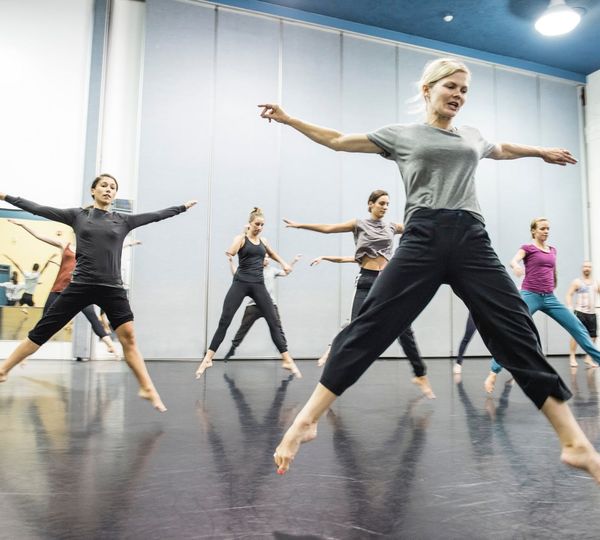Interdisciplinary collaboration: The highlight of my writing year
By Lindsay Zier-Vogel
Writing can be lonely—we hear that all the time. And though I generally love working alone, this year, I’ve been working with a dancer friend on a collaborative process and it’s been one of the greatest things I’ve done for my writing practice.
Last fall, Kate Holden, a brilliant dancer based out east, posted a video of a movement phrase she created from a sentence in my novel, Letters to Amelia. It was mind-blowing to see movement based on my words, and we decided to see what would happen if we started exchanging words and movement. I sent her a poem, and she created a movement phrase based on the poem. Then I wrote a poem about her movement phrase, and back and forth we went.
I started writing as a poet, but it’s been so long since I’ve regularly written poetry—I find it hard to return to the poetic lens when I’m inside a novel-length fiction project. But this external inspiration was exactly what I needed to expand my writing practice.
To our absolute delight, we received funding to continue this research process! (Thank you, Canada Council!)
I’m so used to creating something with a clear and defined end goal—a completed manuscript, a novel, an essay, but this project is focused solely on process. It’s about creating a way of working together, and generating content without judgement. It is in our collective mandate to share whatever we create—the movement phrases that don’t feel right, all of the words I write, even the ones that make no sense, even the ones I’d generally scrap.
(And it’s fascinating how often the fragments I would’ve deleted become the phrases Kate is drawn to! There must be a lesson in there somewhere…)
One of the most exciting parts of the process has been watching Kate transform a poem into a codified movement phrase through a process she calls a “vertical transfer”. She breaks one of my poems into individual words in an excel spreadsheet, then attaches a movement or action to each word. The results are compelling and beautiful—like watching a poem come to life before me.
We worked virtually for a few months—she’d send videos of her movement explorations and I’d send along my written responses—and then we met in Nova Scotia and worked for a week in person in a studio. It was wonderful, and overwhelming. I had to be so wholly present, and it made me realize how easily distracted I am while I’m writing. But I was in the studio, I had to react and respond in the moment. It tapped into the improvisational place I haven’t engaged with since I was a dancer over 20 years ago, and it was fascinating to see the writing that came out of that sustained state.
In Nova Scotia, Kate invited a bunch of artists to come into the process. I, of course, felt strange, having people see our unpolished work, as I’m not used to opening up my process so early in its creation, but the conversations that grew out of these open rehearsals will stay with me always. We were both able to get deeper inside the material, and it was such a good lesson in opening up a process to others, before anything was “done”; something I want to carry with me in my own writing practice.
We are about to head back into the studio for our final in-person research phase and I am so inspired to continue seeking out interdisciplinary projects that push and stretch my writing practice into ways I’ve not before considered.
Your CanLit News
Subscribe to Open Book’s newsletter to get local book events, literary content, writing tips, and more in your inbox
Eventually, Kate will turn the material she’s created into a full-length dance work, and I will edit and eventually collate the writing I’ve done into a poetry manuscript, but for now, I love being in this joyful suspended state of creating without judgment.
The views expressed by Open Book columnists are those held by the authors and do not necessarily reflect the views of Open Book.
Lindsay Zier-Vogel is an author, arts educator, grant writer, and the creator of the internationally acclaimed Love Lettering Project. After studying contemporary dance, she received her MA in Creative Writing from the University of Toronto. She is the author of the acclaimed debut novel Letters to Amelia and her work has been published widely in Canada and the UK. Dear Street is Lindsay’s first picture book, and is a 2023 Junior Library Guild pick, a 2023 Canadian Children’s Book Centre book of the year, and has been nominated for a Forest of Reading Blue Spruce Award. Since 2001, she has been teaching creative writing workshops in schools and communities, and as the creator of the Love Lettering Project, Lindsay has asked people all over the world to write love letters to their communities and hide them for strangers to find, spreading place-based love.




